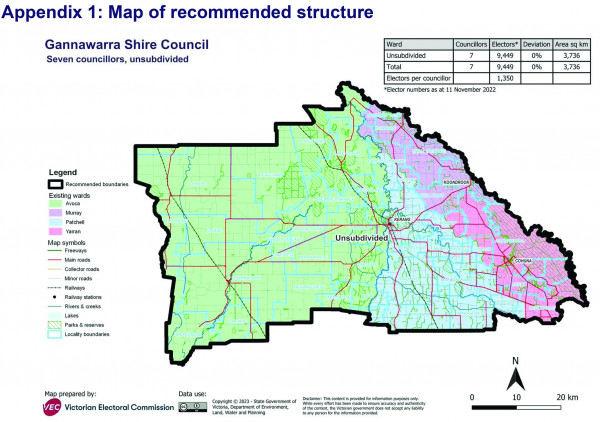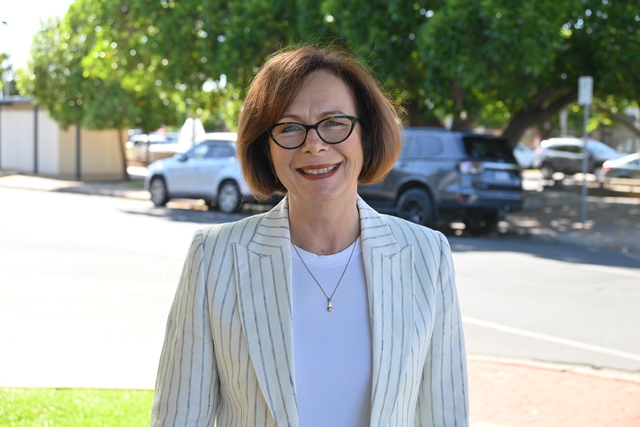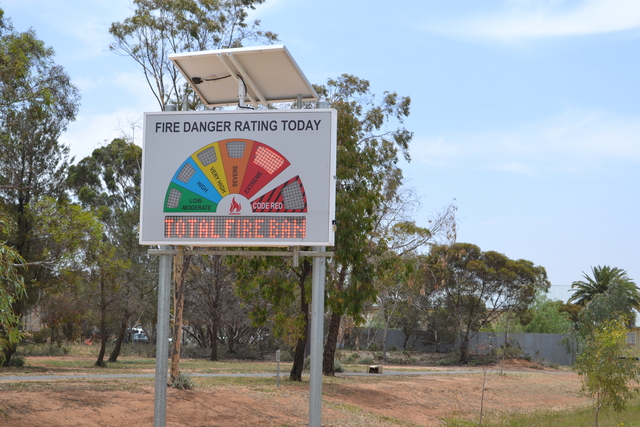THERE has been strong support in the past week for a decision to abolish the wards system in the Gannawarra Shire at this year’s local council elections.
Residents will elect seven councillors in an unsubdivided structure following a review of electoral boundaries by an an Electoral Representation Advisory Panel.
A final report and recommendation by the panel was approval by Local Government Minister Melissa Horne, and made public last week.
Voters are currently represented by councillors in four wards: one in Avoca Ward (Benjeroop, Lalbert, Lake Charm, Mystic Park and Quambatook), one in Murray Ward (Koondrook and Murrabit), three in Patchell Ward (Kerang, Macorna and Tragowel) and two in Yarran Ward (Cohuna and Leitchville).
The panel put forward two models for public consultation, an unsubdivided electoral structure with seven councillors and a subdivided electoral structure with a total of six councillors – two wards with three councillors per ward.
Cr Jane Ogden, who represents Patchell Ward, said the unsubdivided structure would encourage shire-wide perspective on council business.
“When I ran for council in 2020, I did so because my heart was for our whole Gannawarra Shire community,” she said.
“We are a small rural council and councillors run for the privileged role of councillor, because they want the best for their community.”
Cr Ogden said it “made sense” to keep the number of councillors at the status quo given the sheer size – 3736 square kilometres.
“All councillors will be able to go out to our communities for meetings and events, which will give them an opportunity as a group, to hear what’s going on and what’s needed across the whole shire.”
Cr Travis Collier, who also represents the Kerang, Macorna and Tragowel communities, said he was supportive of no wards.
“The Gannawarra Shire is a big area and I believe that seven is the right number of councillors to service the entire shire,” he told the Gannawarra Times.
“I also believe that by having an even number like six would put a lot of pressure on the mayor if a vote was deadlocked at 3-3.
“I’m not concerned that candidates would come from the same area, probably would be the opposite.
“If there were multiple candidates from an area, the votes would probably be split or shared whereas a standout candidate from one area would get a bigger share of the votes.
“This would also give candidates that have supporters in other areas of the shire other than their current ward the opportunity to have them vote for them.”
Mayor Ross Stanton last week said councillors were elected to represent every resident, irrespective of which ward they resided in.
“I have a strong affiliation with the Murray Ward, but making decisions only based on that ward would see poor decisions and outcomes across Gannawarra,” he said.
“Under our current ward structure, councillors still take a wider view on issues, considering their impact on the whole of Gannawarra, rather than just the ward they may represent.”
In a public submission to the panel in support of no wards, Cr Stanton noted the “divide” between Cohuna and Kerang.
“I believe this divide stems from the original amalgamation of the old Cohuna and Kerang Boroughs and is ingrained in some of our community,” he said.
“In reality, I don’t believe this divide is evident in council decisions and spending .. you only have to look at some of the great projects completed in Cohuna in the last few years.
“As a community, we cannot afford our councillors to have an imaginary fence (ward boundary) impacting on their thought and decision process. “From what I see now, we have some councillors who are driven by making decisions based on what they think their ‘ward’ will view as good for them or bad for the others, rather than thinking about the wider implication for the shire as a whole.”
The ERAP final report noted Cr Garner Smith, from Yarran Ward, argued that a subdivided structure would better cater for the shire’s communities of interest and create better accountability in council.
“Cr Smith contended that the two-ward split found was sensible considering the land use and resource allocation in the shire, and that grouping like-minded groups together would create a common bond and purpose,” the report said.
“Speaking about the potential drawback of tied votes in a six-councillor structure, Cr Smith argued that there are effective mechanisms in place to deal with these, and that council at times already operates with six councillors when a councillor is absent from a council meeting.”
The report also stated Cr Smith as saying he thought “locality-based divides would occur regardless of the electoral structure”.
Crs Kelvin Burt, Garner Smith, Keith Link and Charlie Gillingham didn’t respond to questions before deadline.







